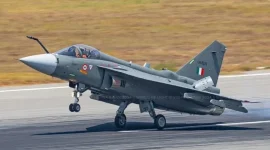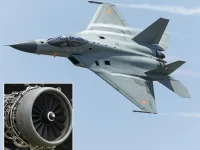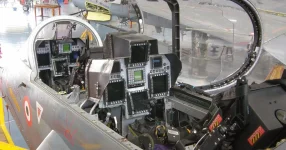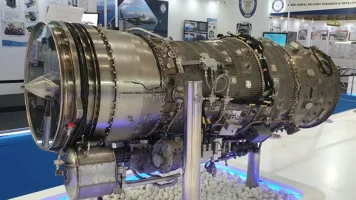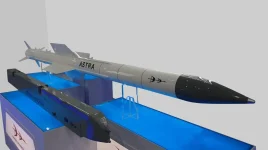Amidst a dynamic regional security landscape, there are indications that India is moving to significantly enhance the combat capabilities of its indigenous Tejas Mk1 fighter aircraft.
Reports suggest an accelerated effort to integrate advanced intelligence systems, new stand-off weapons, and sophisticated Software Defined Radios (SDRs) into both the Initial Operational Capability (IOC) and Full Operational Capability (FOC) versions of the Tejas Mk1.
These potential upgrades are seen as a move to bolster the Indian Air Force's (IAF) operational preparedness in response to evolving threats and the changing nature of aerial warfare.
The Indian Air Force currently operates 32 Tejas Mk1 aircraft. This fleet includes 16 IOC aircraft and 16 FOC aircraft, which have been inducted into the No. 45 Squadron ("Flying Daggers") and the No. 18 Squadron ("Flying Bullets"), both stationed at Sulur Air Force Station in Southern India.
The final FOC aircraft was handed over to the IAF in February 2024, completing the initially planned strength for these two squadrons.
The Tejas Mk1, a lightweight, single-engine, multirole combat aircraft, is a flagship project of India's initiative for self-reliance in defence manufacturing, developed jointly by the Aeronautical Development Agency (ADA) and Hindustan Aeronautics Limited (HAL).
Sources indicate that the ADA and the National Flight Test Centre (NFTC) have instructed pilots involved in the Tejas program to rejoin their respective units promptly.
While official confirmation is awaited, discussions on social media platforms also point towards the integration of upgraded intelligence gathering systems, long-range stand-off weaponry, and advanced SDRs for the Tejas Mk1 fleet. These reports, however, have not yet been officially verified.
The proposed upgrades are expected to bring substantial improvements to the Tejas Mk1's combat abilities.
Upgraded intelligence systems would likely feature advanced sensors and avionics to improve the aircraft's capacity to detect, acquire, and track targets, particularly challenging ones such as low-flying drones and stealth-capable threats.
The integration of stand-off weapons—which could include armaments like the indigenous Rudram anti-radiation missile, whose integration with Tejas variants is reportedly progressing, or precision-guided munitions like the Spice-2000—would permit the Tejas to engage hostile targets from safer distances, reducing its vulnerability to enemy air defence systems.
Software Defined Radios, a key component for modern network-centric operations and already a feature in planned Tejas upgrades such as the upcoming Mk1A variant, would ensure secure and resilient communications.
This would enhance the Tejas's ability to operate effectively in electronically contested environments and facilitate real-time data sharing with other crucial platforms.
Such interoperability could extend to coordination with assets like the S-400 air defence system, which was recently employed by India against Pakistani aerial threats, with reports of several engagement of target in Pakistani airspace.
Such integration is key to transforming the Tejas Mk1 into a more intelligent platform, better equipped to handle future challenges.

